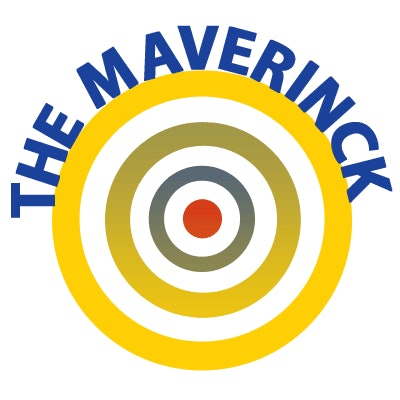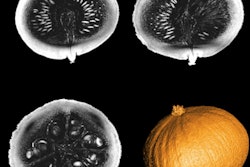
Some years ago, I concluded an article about field strength of MRI equipment with the words: "Next stop: 7 tesla, perhaps 9 or 11 -- for nerds. Or, perhaps and less wasteful, routine imaging at 0.5 tesla for down-to-earth clinical applications with new wire and coil technologies."
Quietly, without much fuss, it seems that the high-field nerds will wake up to a downward trend. After several decades, low (< 0.5 tesla) and medium (0.5T - <1.5T) field MR machines1 push their way up on markets.
The field-strength question has divided the MR community since the early 1980s. At that time, all MR machines operated at low fields; many of the prototypes of that time had strengths of approximately 0.15 tesla. Their image quality was poor. It improved at 0.5 tesla and 0.7 tesla.
Then, some manufacturers, prompted by their research and marketing people, drove MRI up to 1.5 tesla with high-field superconductive magnet systems: "Increase field strength and you'll have more beautiful images."
These systems were and still are huge, dinosaur-like machines. They were expensive, difficult to produce, cumbersome to install, and costly to maintain, but image quality suddenly became better and more patients could be examined per day. Faster imaging became one of the catchphrases.
At that time, Derek Shaw was one of the leading MR scientists in Europe. He worked for several of the main MR manufacturers, among them GE Medical Systems. In 1996, he wrote in a book chapter: "Without the push to high field, MRI systems might be quite different today, probably lower down on the cost/performance scale."2
For the manufacturers, health insurance companies, and MRI owners, high field meant higher profit, which is a recurrent theme not only in medical technology. After the introduction of 1.5-tesla machines competition between different companies brought the clinical 3-tesla MRI equipment.
The high and ultrahigh field dogma was born and established. In some countries low- and medium-field equipment was even banned by tricky regulations imposed by the reimbursement agencies, although there was strong evidence that low- and medium-field systems possess some major advantages.3,4
The medium-field antithesis
Meanwhile, it seems, the U.S., European, and Asian markets with money à gogo are creamed off. Times have changed. Competition is tough. Intricate and complicated equipment doesn't necessarily find uncritical users anymore. New customers have to be found. For all one knows, new demands have to be created, even if one has to return from extravagance to thriftiness -- and use common and scientific sense.
Low- and medium-field scanners had the disadvantage of lower image quality, which meanwhile has been overcome by the improvements made in software and hardware in general and, for instance, noise reduction. Here, phased-array coils and parallel imaging have helped to make substantial headway.
Since T1 relaxation is longer at higher fields (e.g., T1 of gray matter at 3-tesla more than three times longer than at 0.3 tesla), data averaging to increase signal strength is practicable at low and medium fields.
Inherent advantages of low- and medium-field machines include ease of installation and operation, as well as general patient friendliness. Low and medium fields are ideal for open MRI systems, which drastically reduces claustrophobia.
Open systems are convenient for interventional MRI. More so, there is minimal noise of gradient switching compared with the high- and ultrahigh-field machines (no danger of auditory damages to patients), and no perturbation of the vestibular apparatus leading to vertigo.
Since there is hardly any magnetic fringe field, no heavy shielding is necessary to protect the environment from the magnetic field emanating from the system.
These systems are also less artifact prone: There are fewer metal and chemical shift artifacts, reduced susceptibility and dielectric effects. Tissue penetration is better, and there is less radiofrequency power deposition.
On the financial side, the prices of low- and medium-field equipment are more convenient than those for high- and ultrahigh-field apparatuses. Maintenance and energy costs are also lower. With the latest technology, helium replenishment is unnecessary, eliminating the need of buying and refilling of liquid helium at permanently higher costs.
MgB2 superconductive wires and coils
A major step to achieve superior diagnostic quality at low and medium fields was the invention of wires and coils using magnesium diboride (MgB2). For some years now they have been commercially created, eliminating the need for liquid helium and possible quenches.5 MgB2 machines require one liter of helium to keep its superconducting magnet cold, compared with hundreds of liters for old-type high-field machines.
They allow, for instance, the production of superconducting easy-access open MR systems operating at 0.5 tesla with an imaging performance equal to high-field equipment. This development is a major challenge for existing high-field equipment, in particular because the diagnostic quality of midfield systems was already described as competing with high field even before the introduction of high-temperature superconductive coils.
The major Italian manufacturer of magnesium diboride wires has started producing its own MRI equipment able to acquire images in any position, lying, standing, sitting, bending over. The image quality at 0.5-tesla is astonishing. A German company offers a midfield machine in the typical donut shape of high-field equipment. Other manufacturers seem to follow soon. The features of the new cutting-edge medium field technology have clear benefits for patients.
The science behind the image contrast at different magnetic fields
While in the 1980s the commercial battles of the field strength war flared up, one of the most sophisticated research projects on the behavior of tissue relaxation by creating nuclear magnetic resonance dispersion (NMRD) was carried out. This huge scientific effort remained unique, the coordination and logistics were intricate, nobody has ever repeated it.
The results did not overlap with the commercial ideas, and they were deliberately overlooked in the race for higher fields.
It was an interdisciplinary project involving several universities and taking more than two years, using an IBM Field Cycling Spectrometer, a machine of which only a handful were built by the IBM Research Laboratories in upstate New York. This machine could change its magnetic field strength within seconds between ultralow fields and high fields to measure T1 relaxation times which change with field strength.
For brain studies, for instance, normal human brain gray and white matter samples from various anatomical locations of the brain were excised, within 24 hours after death, from patients who died of other than neurological causes. Tissue samples weighing between 200 and 600 mg were transferred to sample tubes directly after dissection, quickly deep frozen, transported to the NMR laboratory on dry ice (-78.5°C), and stored in a deep freezer until rapid examination. The samples were thawed at room temperature shortly before the measurements.
Measurements up to 1.5 tesla were performed on the NMRD relaxometer. The advantages of relaxometric measurements of ex vivo samples are the extremely high accuracy of the measurements, the selection of tissue that looks homogeneous with the ability to reject mixed tissue samples, and the detailed histology available after the measurements. Compared with NMRD data, T1 computations with MRI systems are rough estimations.
Relaxometry permitted the determination of longitudinal relaxation rates of numerous tissues and chemical compounds. The resulting nuclear magnetic relaxation dispersion profiles allowed the prediction of tissue contrast and efficacy of contrast agents at any field strength.6-11
The T1 of tissues does not show a monotonic increase with field strength. Characteristic transverse decay data and longitudinal relaxation dispersions were observed for the main constituents of human brain, i.e., gray and white matter. White matter exhibits a dispersion not encountered in any other tissue. This is most probably caused by an additional relaxation process occurring in myelin and involving the, themselves MR-invisible, membrane lipids. Due to this fact, pure T1 contrast of normal brain tissue and pathologic lesions (multiple sclerosis, astrocytoma) increases from low field strengths to a maximum between 0.3 tesla and 0.5 tesla MHz and decreases afterward.
Thus, optimum T1 contrast for brain examinations with decent signal-to-noise can be best reached around 0.5 tesla. As we wrote in a publication more than 30 years ago, "It is felt that consequences of this particular behavior will be important for neurological MRI, adding a new element to the sometimes controversial question of optimal field strength."
Suddenly these scientific results seem to make commercial sense too.
References
1. EMRF (European Magnetic Resonance Forum Foundation). Definition of field strength. In: Rinck PA. An Introduction to magnetic resonance in medicine. 2nd ed. New York: Thieme Medical Publishers. 1990. 12. | Rinck PA. Magnetic field strength. In: Rinck PA. Magnetic Resonance in Medicine. A Critical Introduction. 12th ed. BoD, Norderstedt, Germany. 2018. ISBN 978-3-7460-9518-9. 38.
2. Shaw D. From 5-mm tubes to man. The objects studied by NMR continue to grow. In: Grant DM, Harris RK. Encyclopedia of nuclear magnetic resonance. Volume 1, Historical perspective. Chichester: John Wiley and Sons. 1996, 623-624.
3. Hoult DI, Chen C-N, Sank VJ. The field dependence of MRI II. Arguments concerning optimal field strength. Magn Reson Med 1986; 3: 730-746.
4. Posin JP, Arakawa M, Crooks LE, Feinberg DA, Hoenninger JC, Watts JC, Mills CM, Kaufman L. Hydrogen MR imaging of the head at 0.35 T and 0.7 T: effects of magnetic field strength. Radiology. 1985;157: 679-83.
5. Bertora L. MRI magnets based on MgB2. in: Flückiger R (ed). MgB2 superconducting wires. Basics and applications. Hackensack, NJ, U.S.A.: World Scientific Publishing. 2016. 485-536.
6. Rinck PA, Muller RN, Fischer H. Field and temperature dependence of contrast in magnetic resonance imaging. RöFo Fortschr Röntgenstr 1987; 147: 200-206 (in German).
7. Rinck PA, Fischer HW, Vander Elst L, Van Haverbeke Y, Muller RN. Field-cycling relaxometry: medical applications. Radiology 1988; 168: 843-849.
8. Fischer HW, Van Haverbeke Y, Rinck PA, Schmitz-Feuerhake I, Muller RN. The effect of aging and storage conditions on excised tissues as monitored by longitudinal relaxation dispersion profiles. Magn Reson Med 1989; 9: 315-324.
9. Fischer HW, Rinck PA, Van Haverbeke Y, Muller RN. Nuclear relaxation of human brain gray and white matter: analysis of field dependence and implications for MRI. Magn Reson Med 1990; 16: 317-334.
10. Muller RN, Vander Elst L, Rinck PA, Vallet P, Maton F, Fischer H, Roch A, Van Haverbeke Y. The importance of nuclear magnetic relaxation dispersion (NMRD) profiles in MRI contrast media development. Invest Radiol 1988; 23, Suppl 1: S229-231.
11. Rinck PA, Muller RN. Field strength and dose dependence of contrast enhancement by gadolinium-based MR contrast agents. Eur Radiol 1999; 9: 998-1004.



















